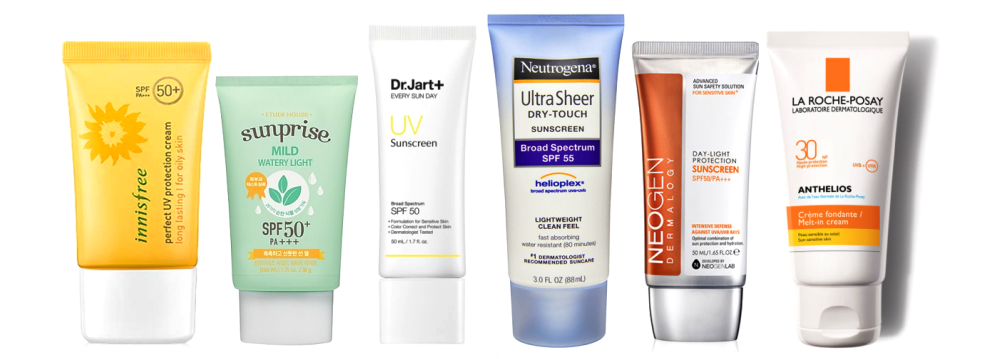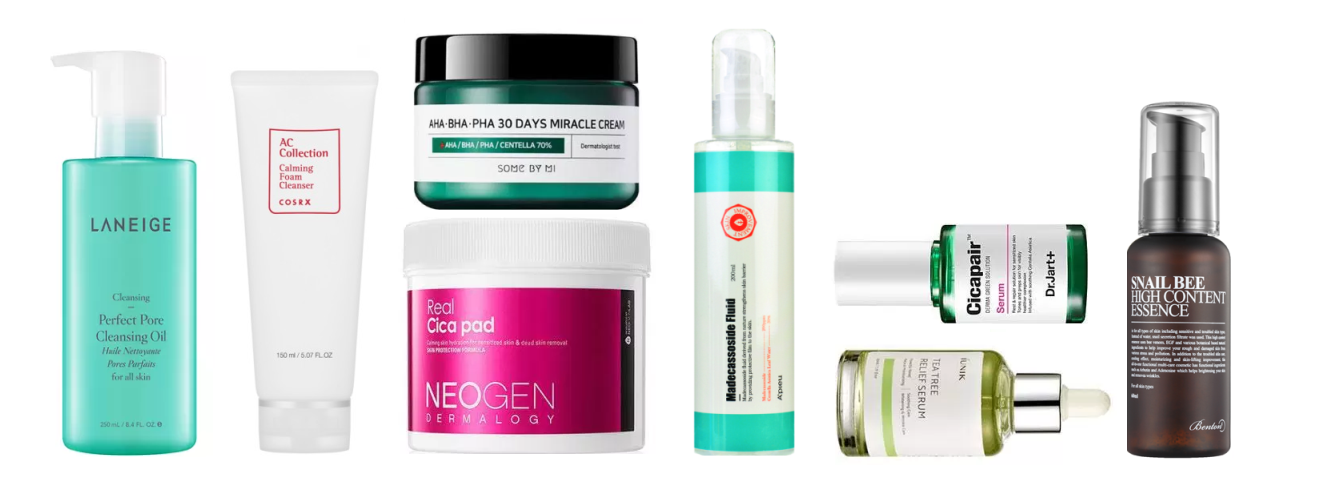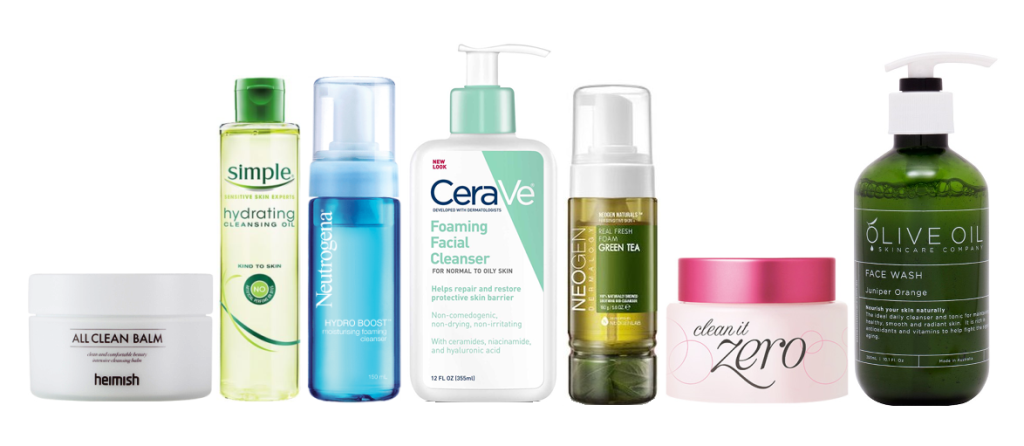
Sunscreens
the theory
Something as seemingly simple as sunscreen has become rather complicated. Firstly, let’s examine what it is that we need to be protected from. We’re all aware that the sun emits radiation throughout the year that can cause skin damage. We need to protect our skin from both forms, UVA (long-wave ultraviolet A) and UVB (short-wave ultraviolet B) rays, responsible for tanning, sunburn and aging of the skin as well as wrinkles and skin cancers. Nowadays, sunscreens will protect against both. In combination and at an SPF of over 15, this is referred to as “broad spectrum” cover.
the SPF
The SPF or Sun Protection Factor of a sunscreen is mathematically derived by comparing the time it takes you to burn with and without sunscreen. For example if you burn in 300 minutes wearing a sunscreen and 10 minutes when not wearing sunscreen, the SPF determined is 30 (300/10). Thus, the higher the SPF, the better the level of protection.
the number
It’s not unreasonable to think that a sunscreen with SPF 30 should give you twice the sun protection as one that is rated SPF 15. However, this is not correct. An SPF 30+ sunscreen blocks out approximately 97% (SPF 50 blocks 98%) of the sun’s UV rays whilst an SPF 15 blocks about 93%. However, no sunscreen can give you 100% cover so it’s important to always apply a broad spectrum sunscreen liberally and often. Furthermore, no sun lotion is 100% waterproof. Labels can claim only that there is some level of water resistance.

the choice
Sunscreens can be either chemical or physical. Chemical sunscreens, as the name suggests, contain chemicals such as octylcrylen, avobenzone and octinoxate. Physical sunscreens use natural agents like zinc and titanium oxide. The primary difference lies in how they work.
Chemical sunscreens absorb UV rays and expel them as infrared rays. They generally offer more coverage but can also be more irritating on the skin. Physical sunscreens form a protective layer that reflects the rays so they don’t get absorbed at all. Sunscreen may be a combination of both.
Both, when applied correctly, are effective and considered safe. Which to use comes down to personal preference.

the application
Sunscreens also come in a whole range of application types. Lotions and creams are widely available, easy to apply and generally non-drying but they can leave a sticky or greasy residue. Spray applications like gels are alcohol-based, so they’re non-greasy but may dry your skin. They’re easy to apply however, sprays can be a bit hit-or-miss in terms of coverage so not usually recommended. Roll-ons and sticks are easy to use and throw in your bag but are usually only effective to cover small areas such as the face and neck. Trying to apply them all over your body is time consuming and not at all practical.
The sunscreen needs to fit in with your lifestyle, otherwise, you simply won’t bother. The easier it is to apply and reapply, the more likely you will wear it. When choosing, many factors come into play. Things to consider for instance may include whether you are also applying makeup, exercising, are indoors or outdoors, etc.
Chemical ones tend to spread better as they are usually a thinner consistency but may also clog pores. They wear well in terms of perspiration and water exposure whereas physical sunscreens can rub off and are not as resistant to these factors. Physical sunscreens are gentler on sensitive skin but can leave a white cast which can be a concern for most people unless you’re at the beach.

Sunscreens are sometimes incorporated into other skincare products such as moisturizers, foundations and face powders. These can help keep you protected without competing with other priorities. This in turn encourages sunscreen use which is a good thing. So if you really hate using separate sunscreens, find that you sometimes forget to apply it or don’t want to ruin your makeup, consider a product that serves a dual purpose.
the dangers
There is a lot of talk about the safety of sunscreens, some even suggesting that the chemicals they release can cause cancer. So let’s consider the logic. Each chemical ingredient in sunscreen is usually around 0.1-5.0% concentration which equates to around 1000mg in 100ml of product. On average, 30% penetrates the skin. The observed no-effect level established by scientists is 810mg per kg of body weight. This means you would have to apply sunscreen somewhere in the order of 2,000 times in a day before toxicity would become an issue.
As such, the real danger lies in avoiding sunscreen altogether. There is no evidence that anyone has ever died from sunscreen but millions die from skin cancer each year.
the advice
When applying and reapplying sunscreen, best practices suggest that we conform to the following key rules in order to stay as protected as possible.
More is better. The minimum amount of sunscreen advised is 2mg of lotion/cm2 of exposed skin, which translates to approximately 6 teaspoons to cover the average adult (0.5-1 teaspoon for face and neck).
Apply ahead of time. Sunscreen takes approximately 15 minutes to become effective after application, so think ahead and apply it in a timely fashion so it is protecting you from the moment you walk outside.
Reapply regularly. No matter what the labels states, sunscreen should be frequently reapplied at a recommended interval of at least two hourly to maintain its strength and a consistent level of protection.
Avoid high sun. Even with vigilant use of sunscreen, experts advise to avoid exposure around the middle of the day, particularly in summer when UV intensity can be extreme. Furthermore, the World Health Organization advises limited exposure to the sun between 10am and 4pm.
Be sun smart. Don’t rely on sunscreen alone to protect you. Remember the Australian Cancer Council message and slip on a shirt, slop on the sunscreen and slap on a hat and sunglasses.
At the end of the day, any is better than no sunscreen, so choose a product that you enjoy wearing. Don’t just apply it when you’re at the beach, park or playing a round of golf. Sunscreen should be a daily ritual as even in the winter, your skin is subjected to UVA and UVB radiation during daylight hours. So apply daily, two hourly and liberally.
the references
Guide to buying and using sunscreen Choice
What is sun protection factor (SPF)? What is the best sunscreen? Markus MacGill, Medical News Today
Under protection? Karina Bray
Is Sunscreen Really the Cause of Skin Cancer? Nicki Zevola Benvenuti, FutureDerm
the disclaimer
Please read in context with my disclaimer.




